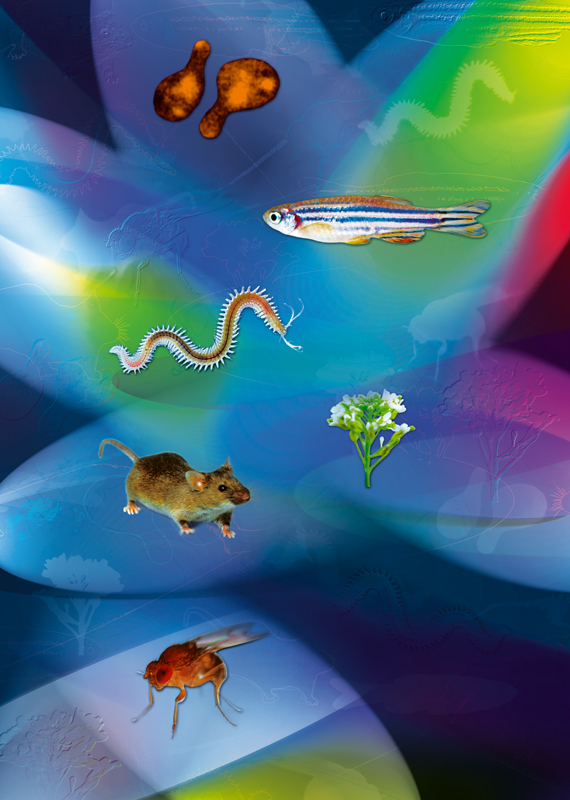A recent article posted in the BBC News provided a good explanation of why scientists commonly study these organisms as models for human diseases and conditions. Model organisms are chosen because their physiology is similar to other animals, including humans, in addition to other reasons:
Visit the BBC News to see why researchers most often use flies, fish, mice and worms to understand the mechanisms of disease and health.
Did you know that ~70% of the genes in a fruit fly are homologous to human genes? Zebrafish have genes that are homologous to those involved in ~75% of genetic-related human diseases.
Top Image: EMBL, Explore Model Organisms


I would suggest that everyone objectively read the writings of Dr Spetner and Dr Alvin Radgowsky..both highly respected scientists....not kooky creationists by any means... Look at the probability calculated that an aeomeba formed itself by chance....humans have 92 chromsomes yet worms have over 100? They only use scientific data and mathematics to clearly show how improbable this
@James #1 -- This is off topic from the post. Anyone except a kooky creationist would understand that any such "probability calculated" is utter and complete nonsense. Please feel free to peruse any number of past postings in Lifelines, EvolutionBlog, or elsewhere on this site to learn why.
When studying a gene that is new for me, I immediately want to know if a homolog exists in mouse, bird, fish, fly, worm, yeast, and how similar it is. If it's conserved down to yeast, we know it's pretty ancient. Yeah, we believe in common decent, partly cause it gives us ideas that have proven useful in the past and we figure it'll help again on today's gene. We're so crazy we want to know what other proteins interact with this protein in yeast. It's almost never useless information.
Many years ago I had a serious head injury, I have found over the years that the brain can heal itself, however slowly, even years afterwards. Though not completely so, it is much, much better now than at the time of injury and even several years after.
Fish, mice, flies and moles have the same physiological mechanism as humans and this the reason that most of the experiments are performed on them.